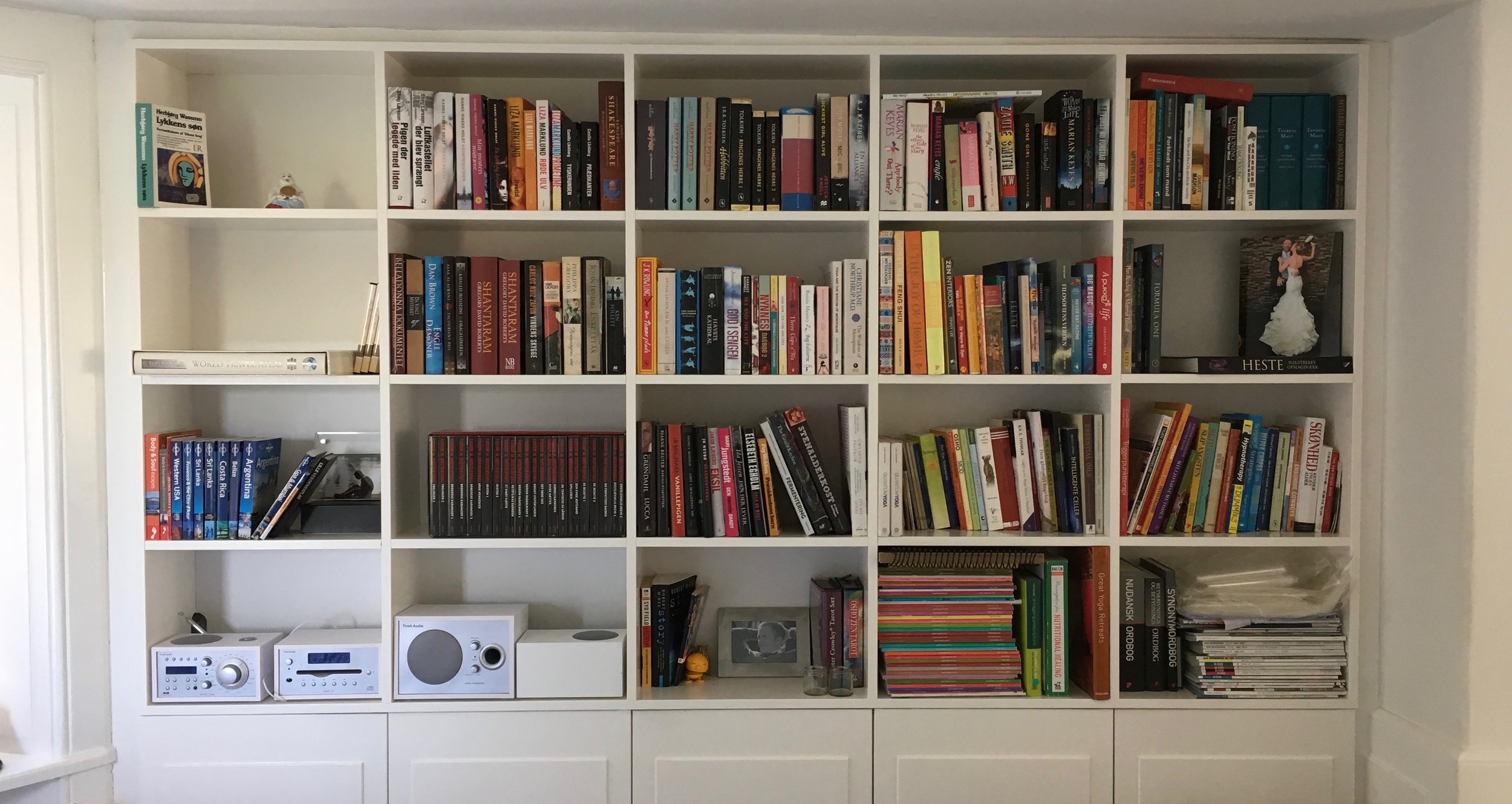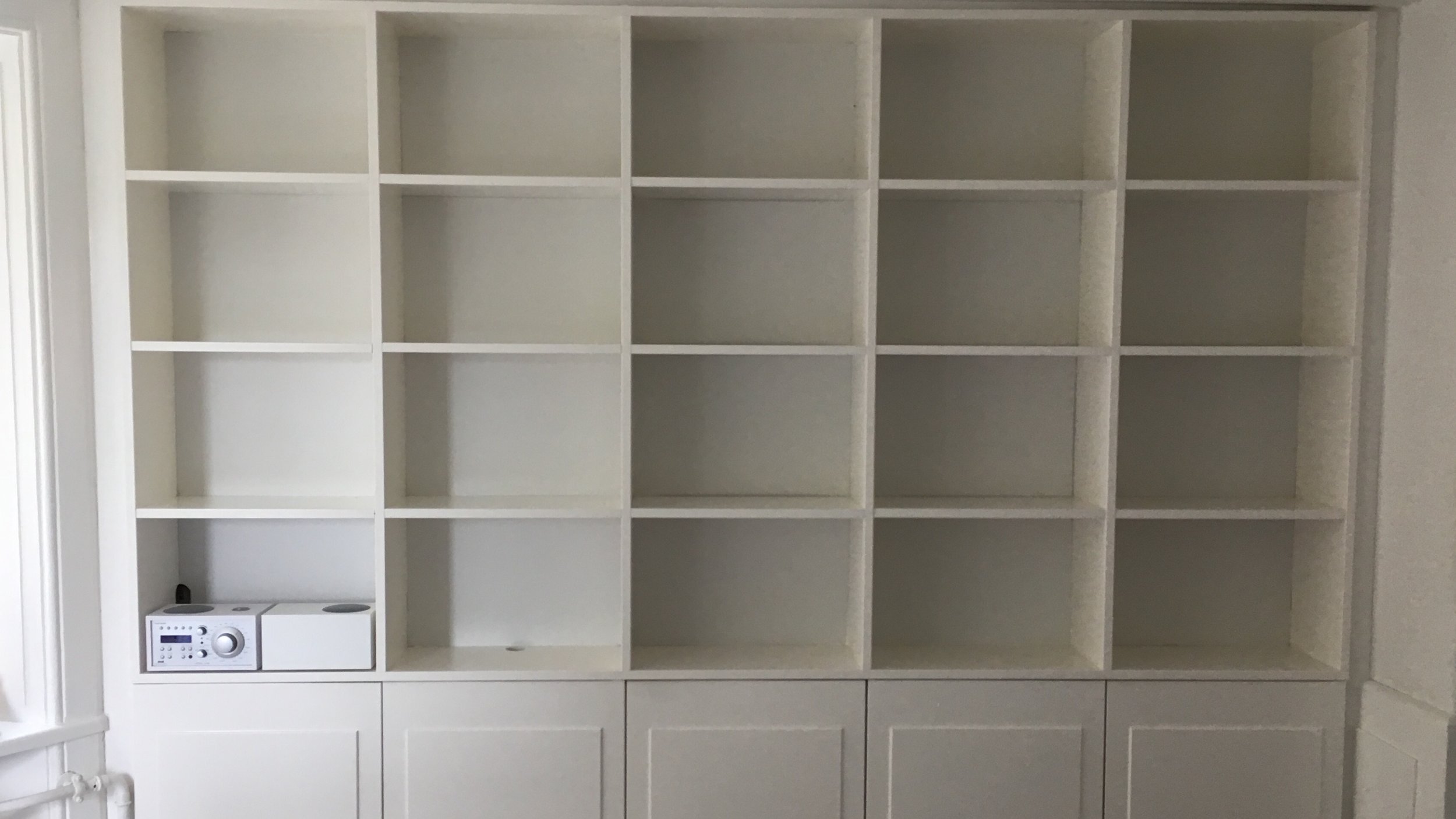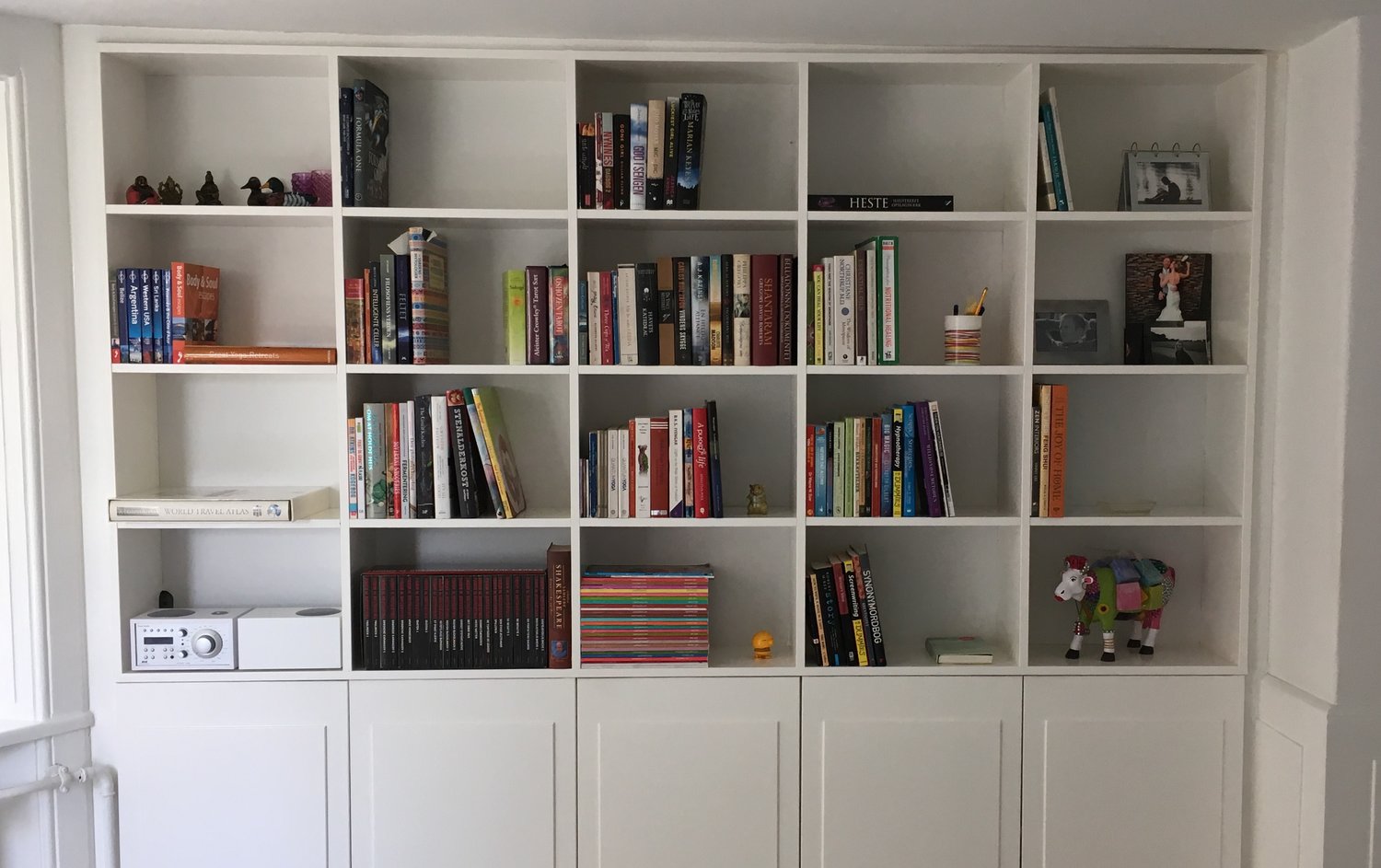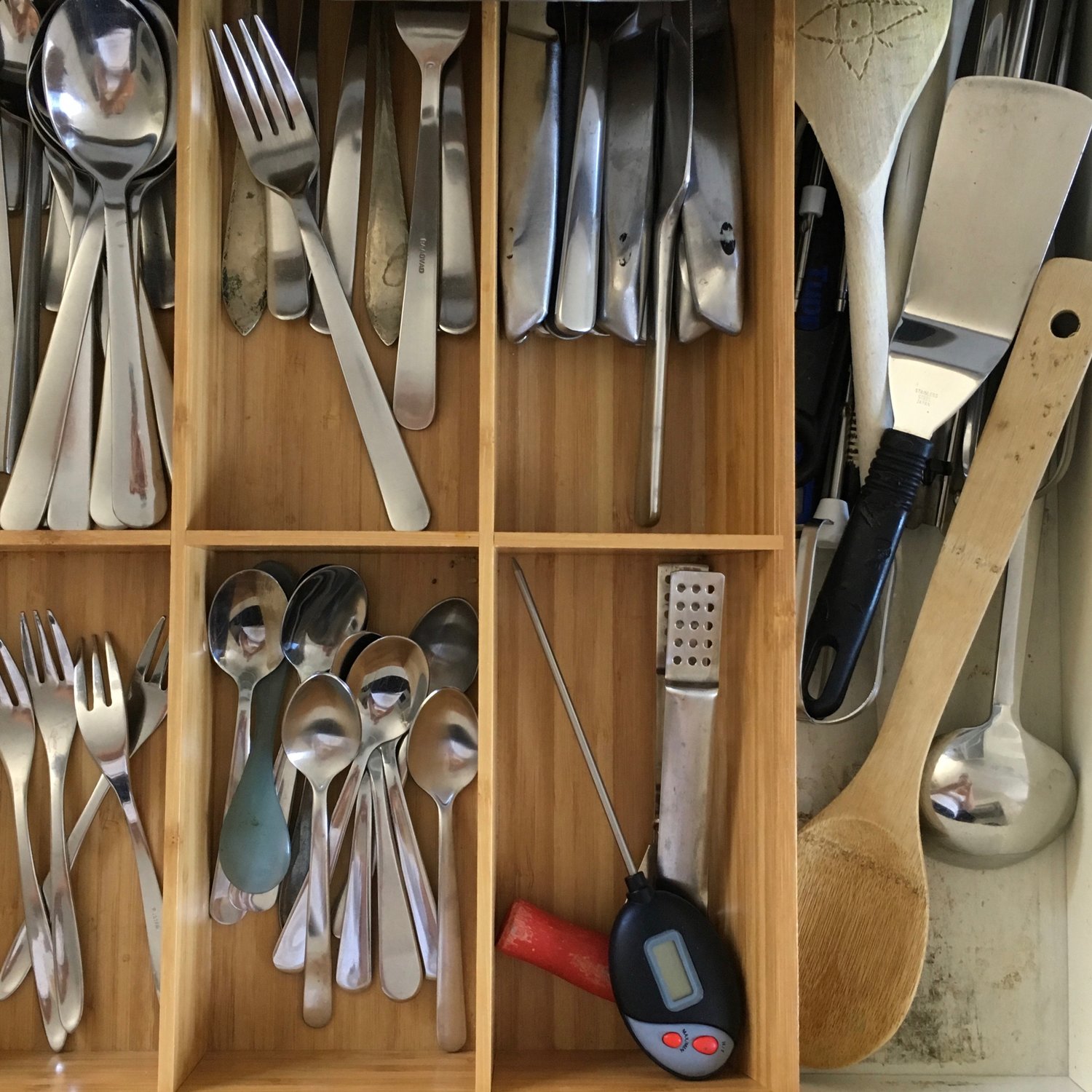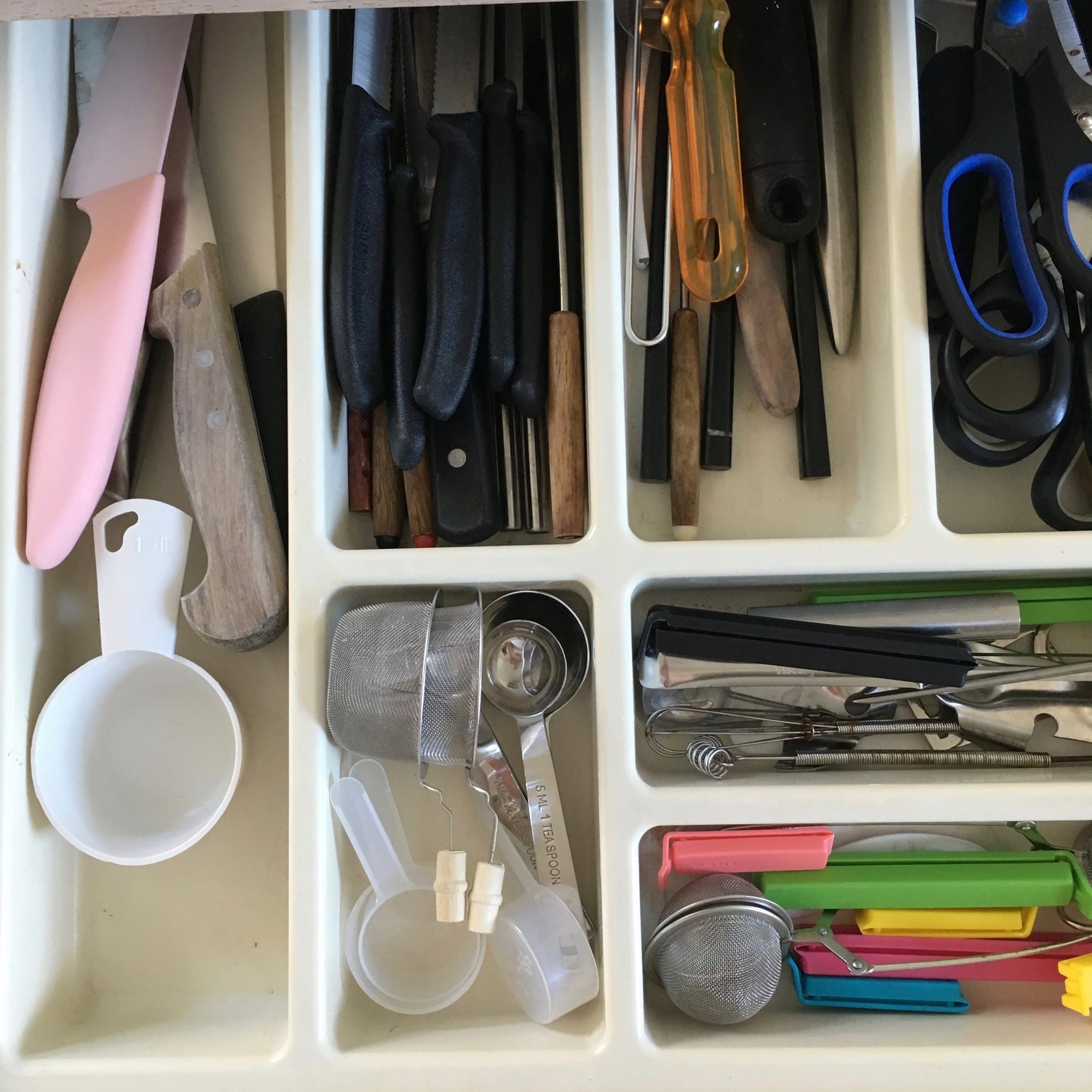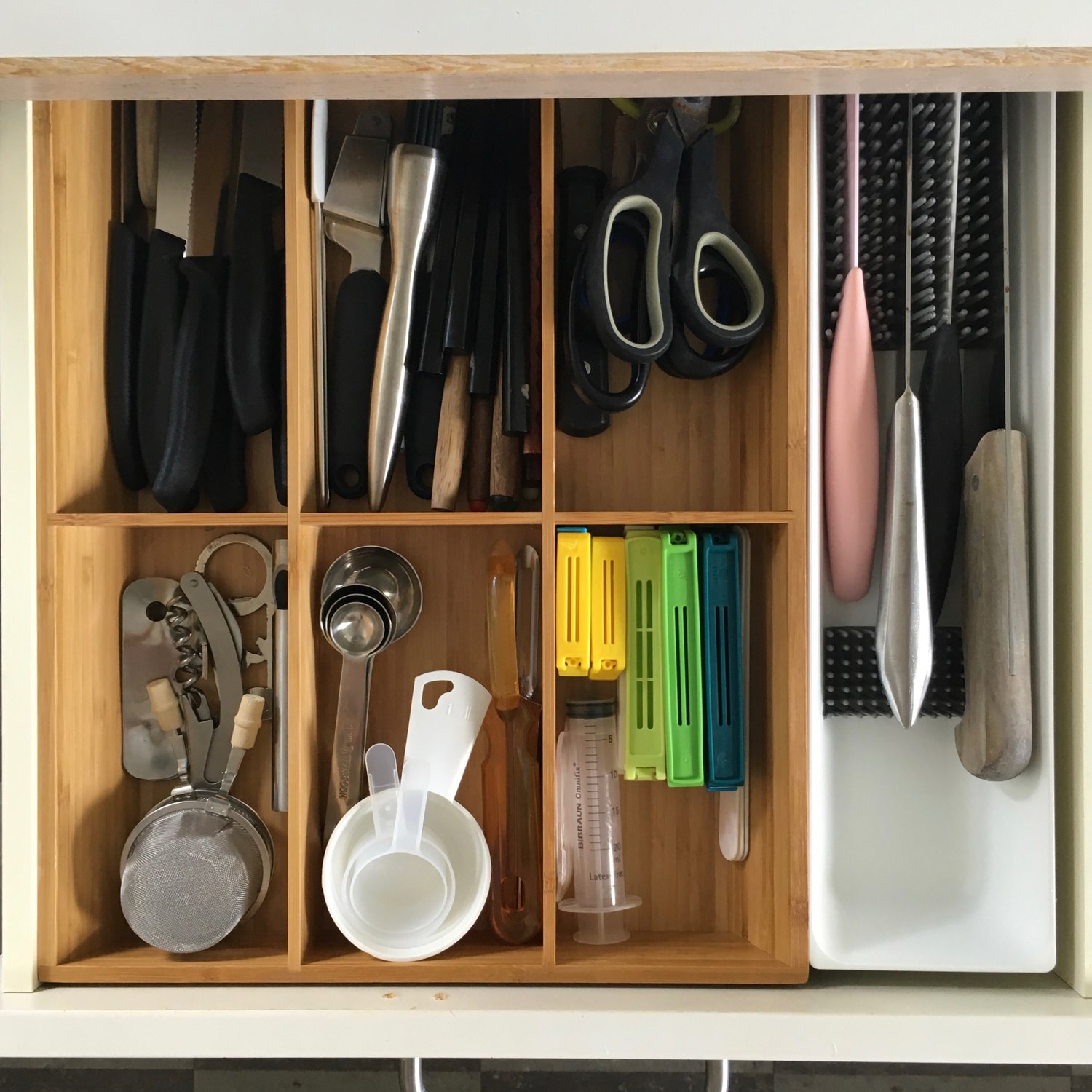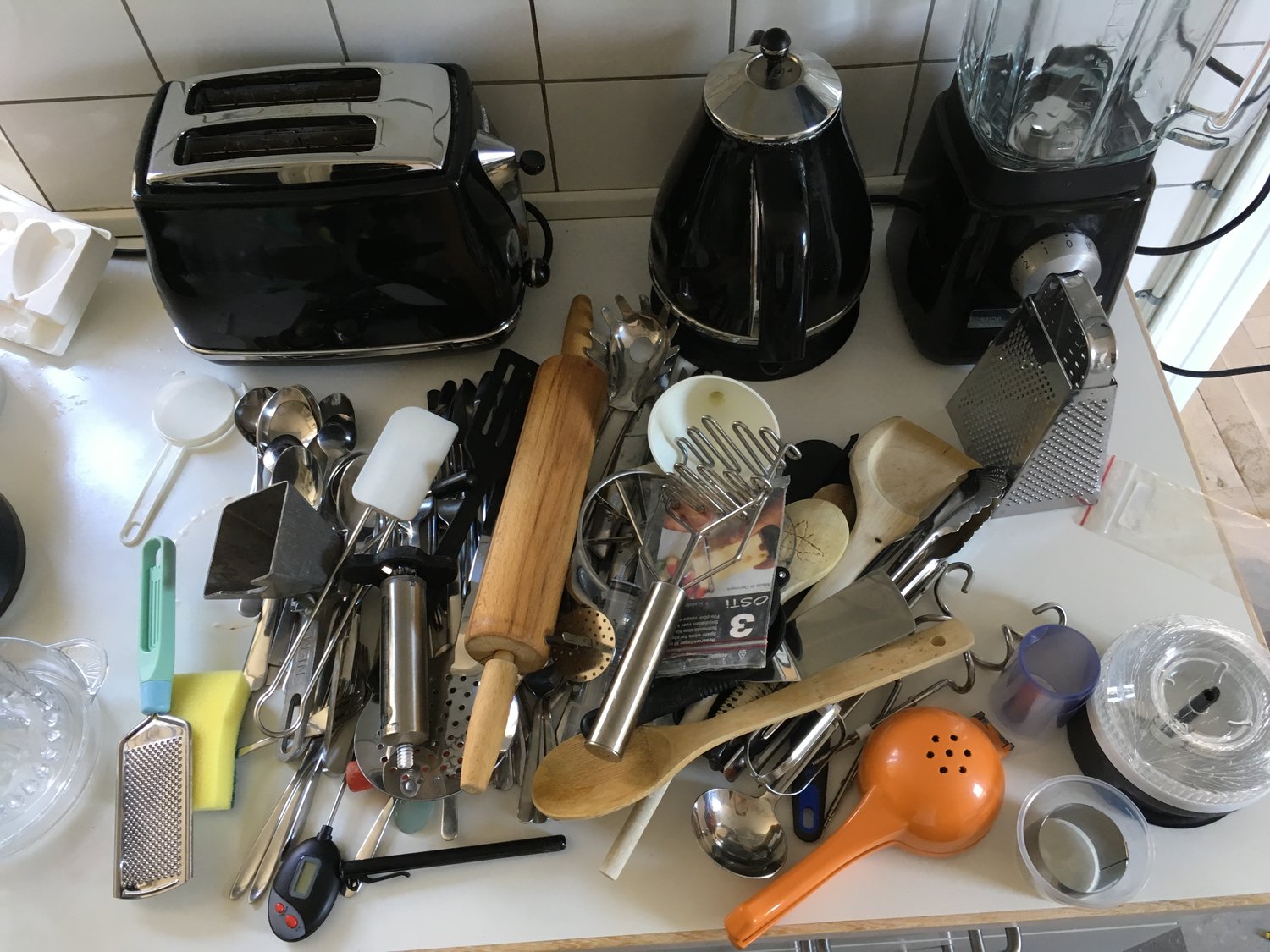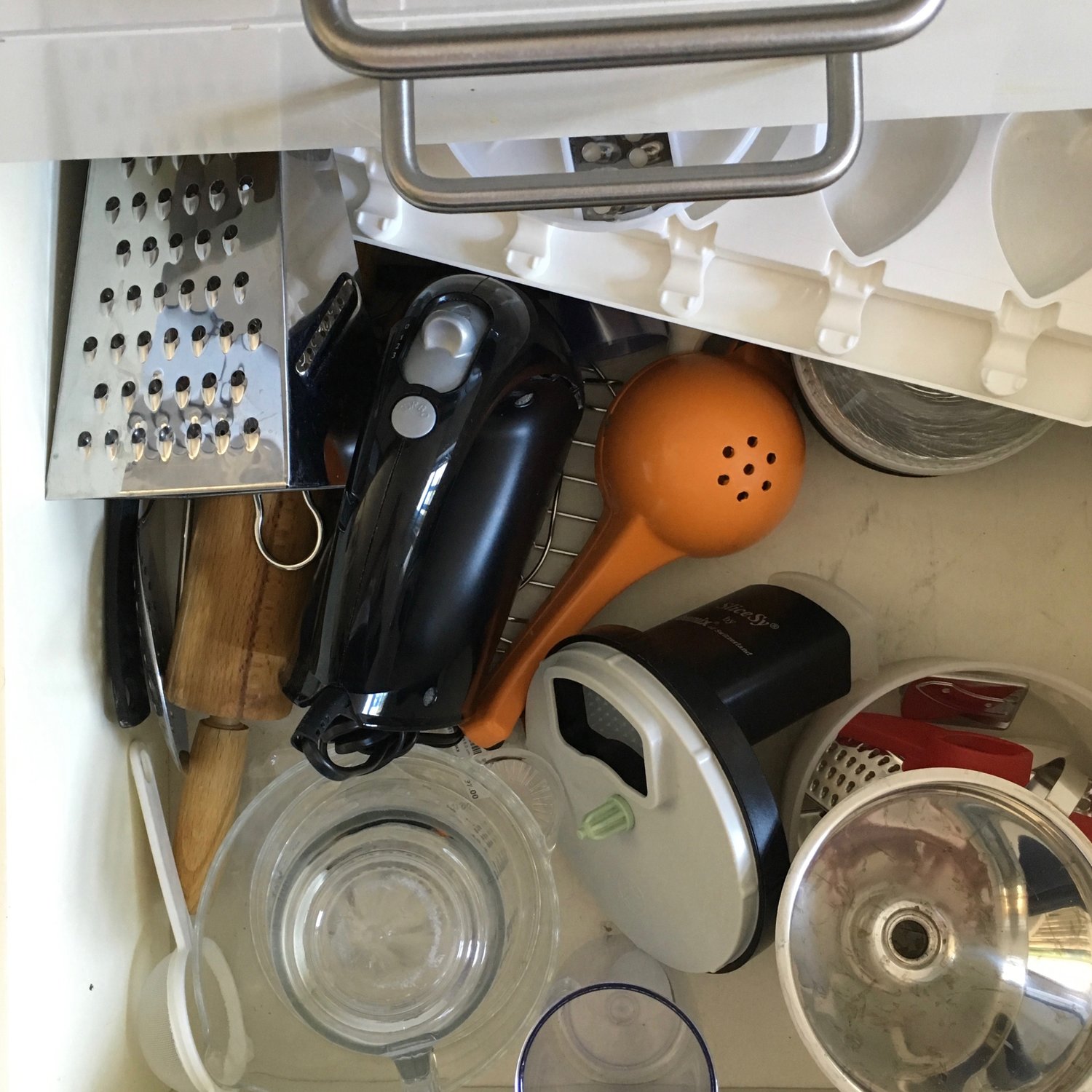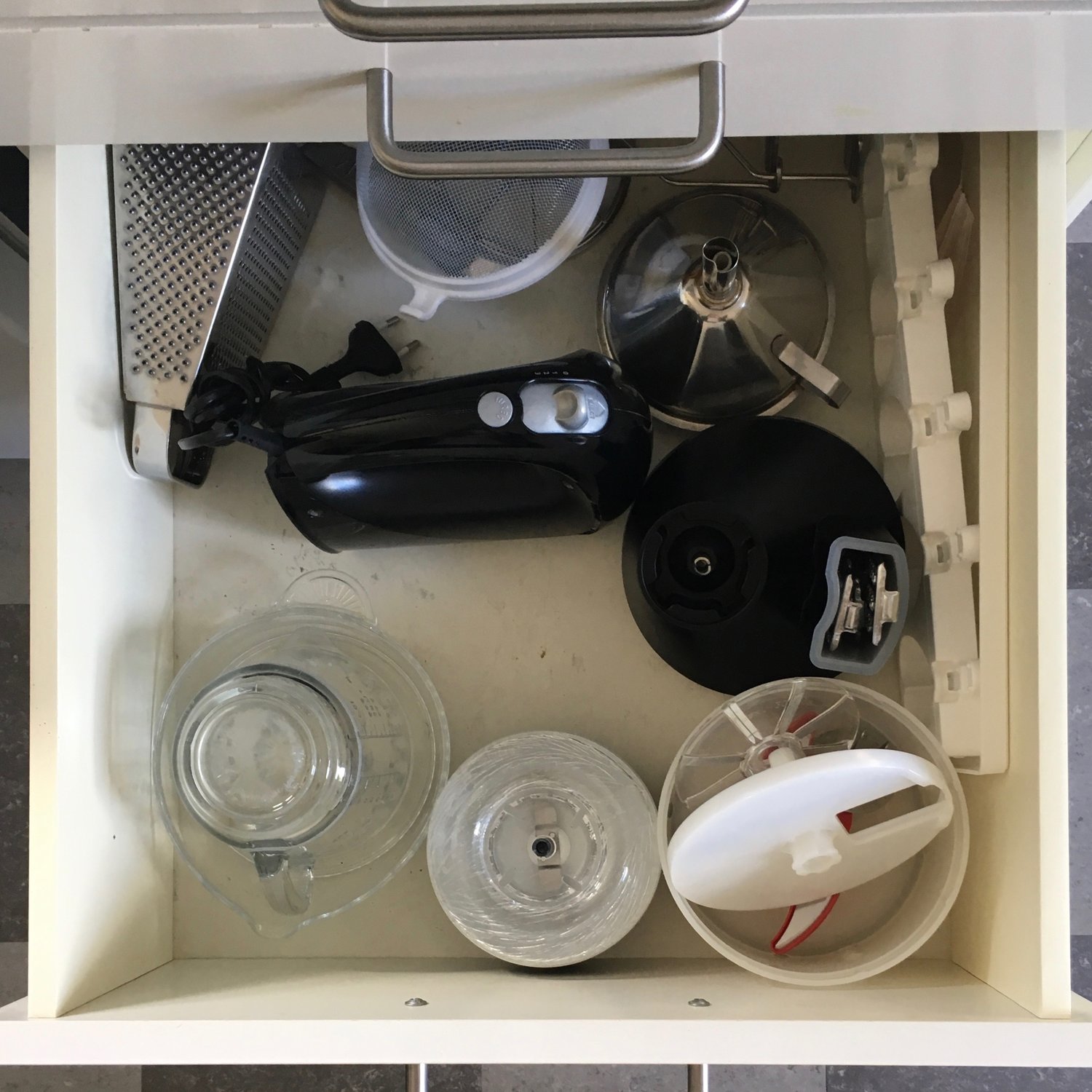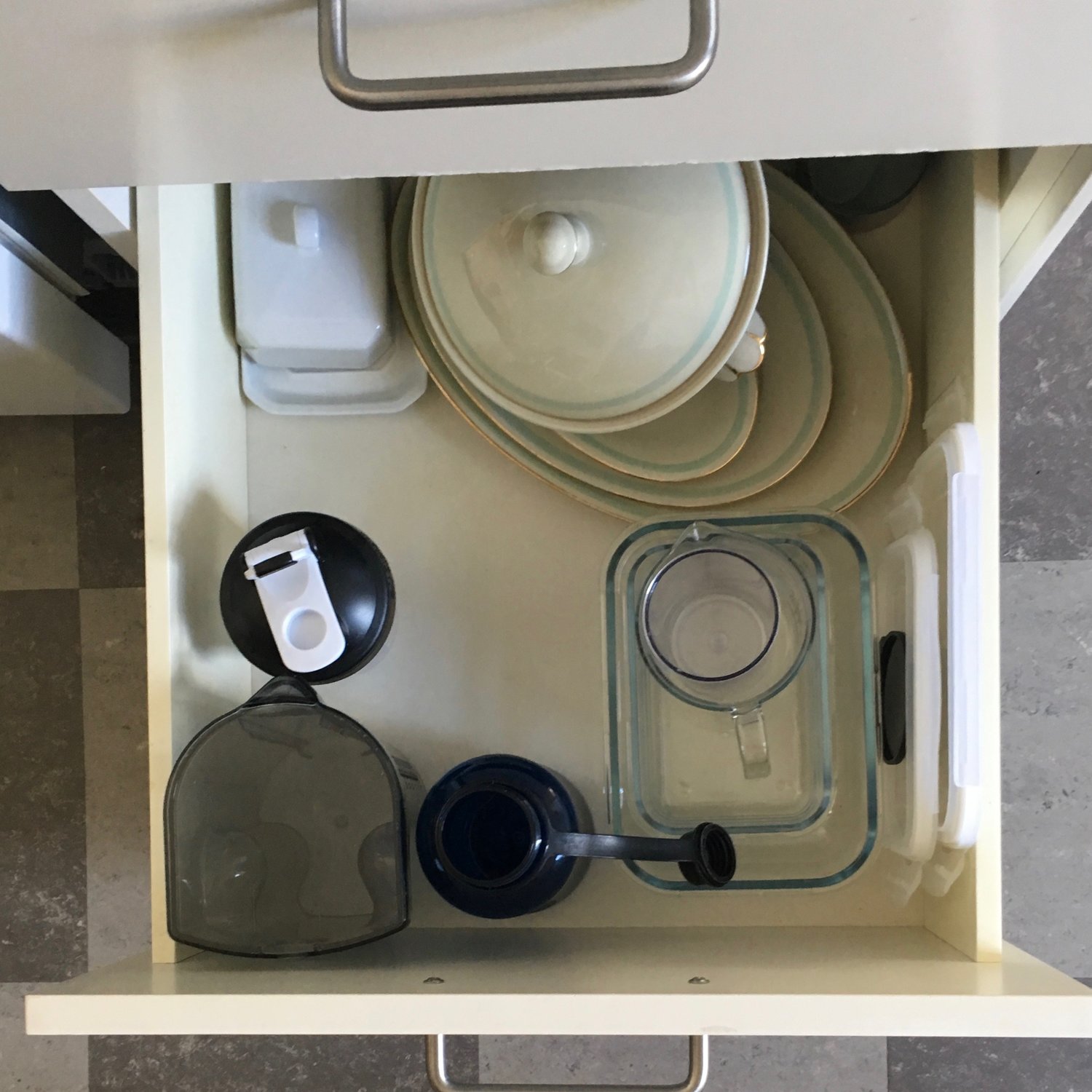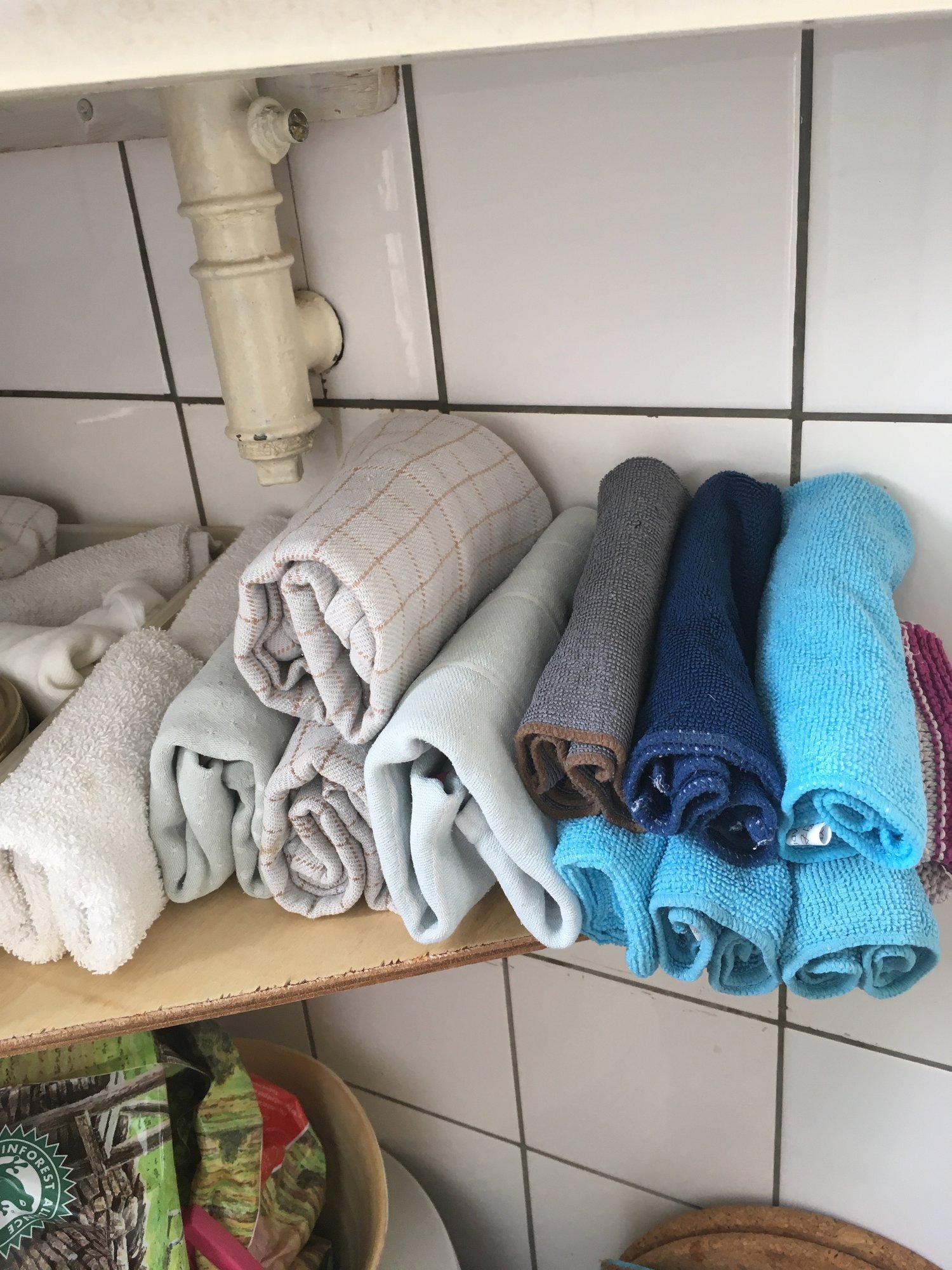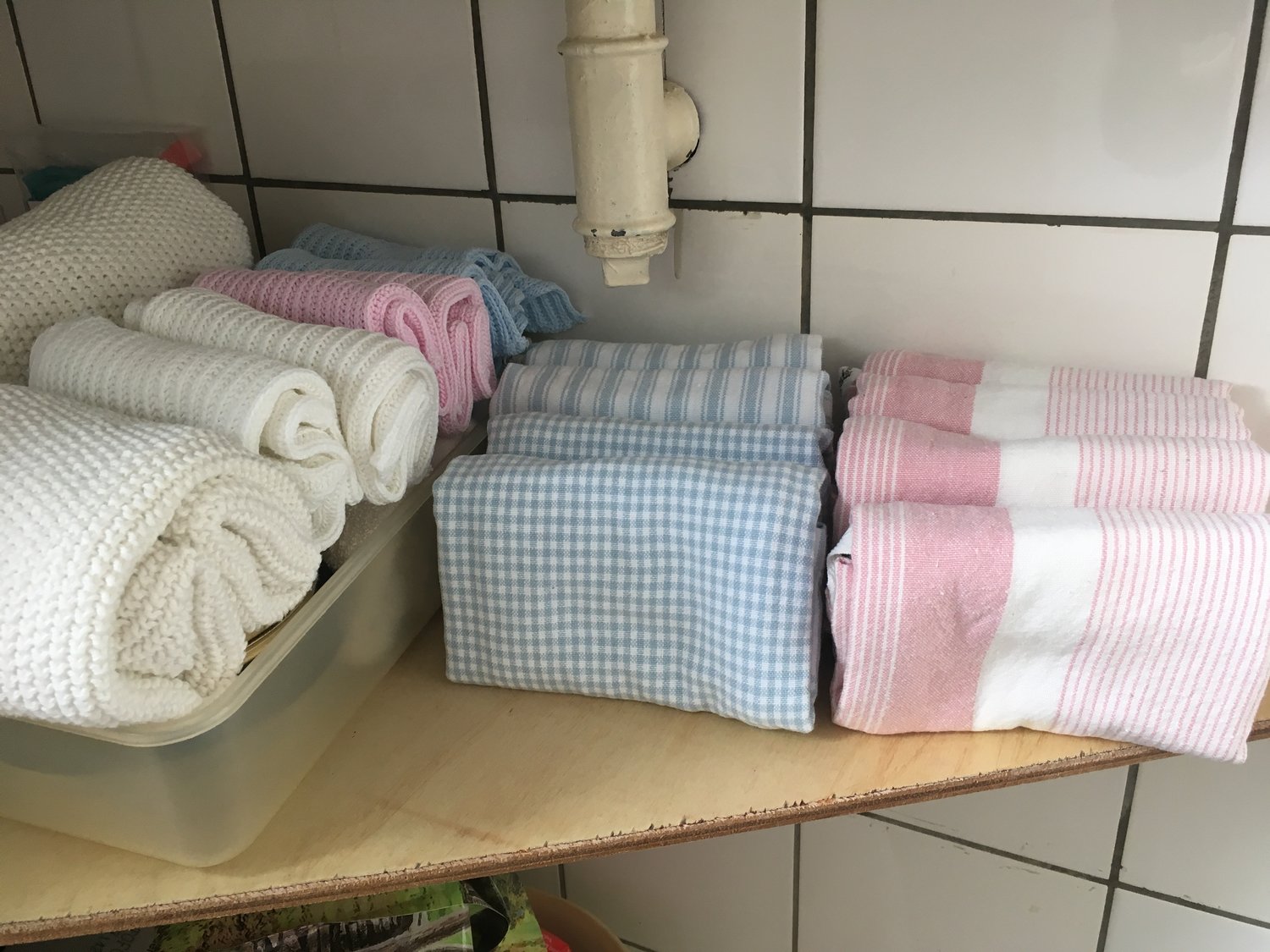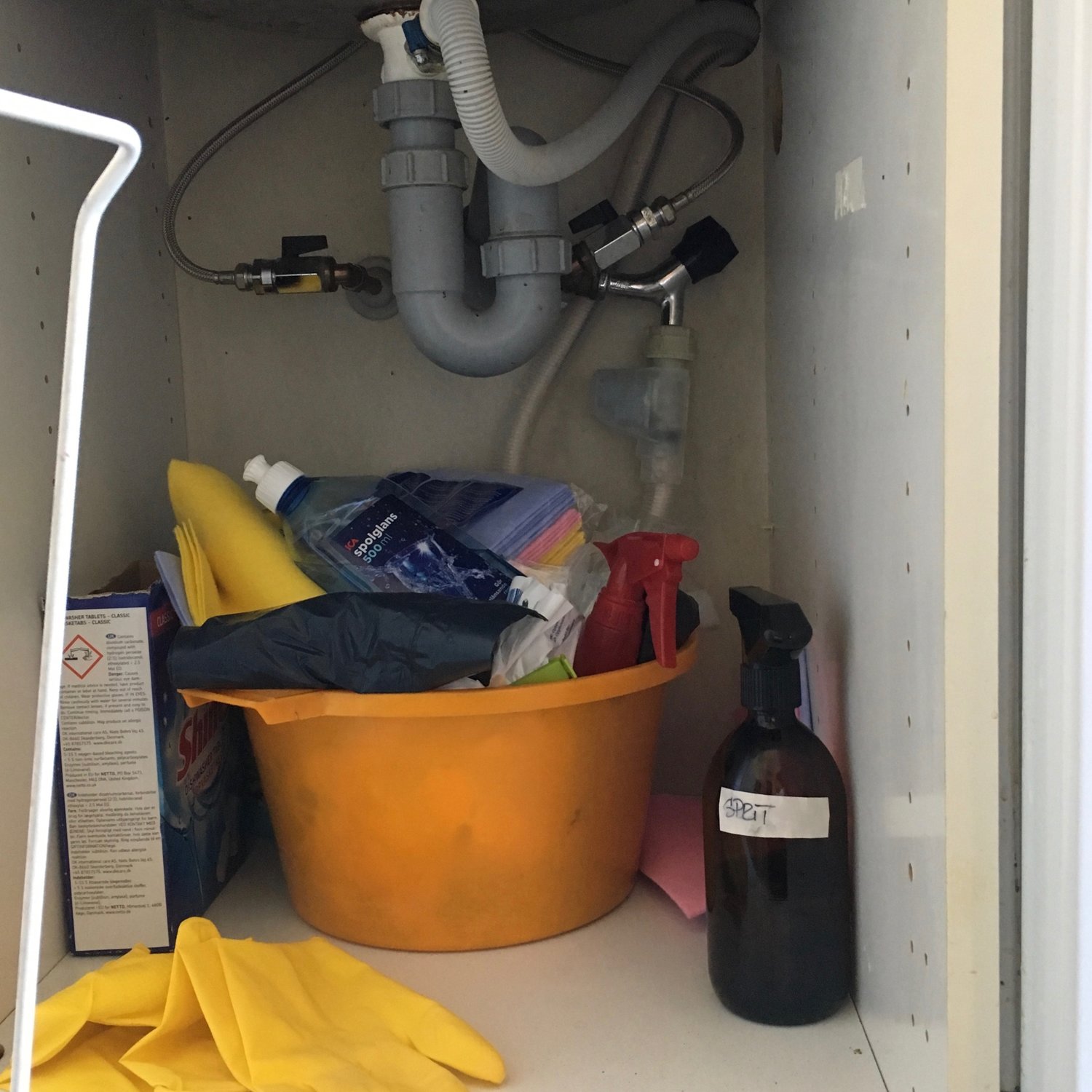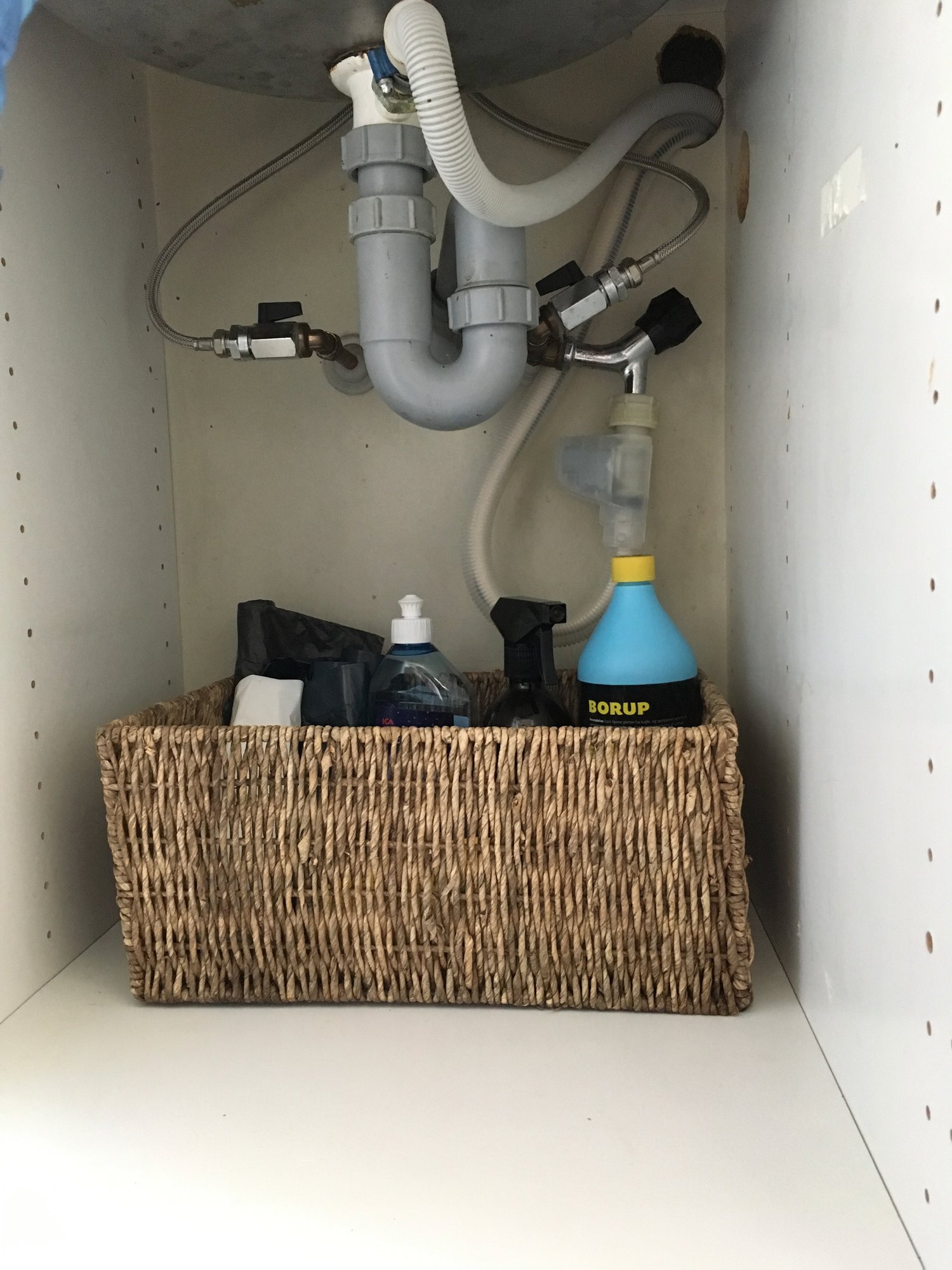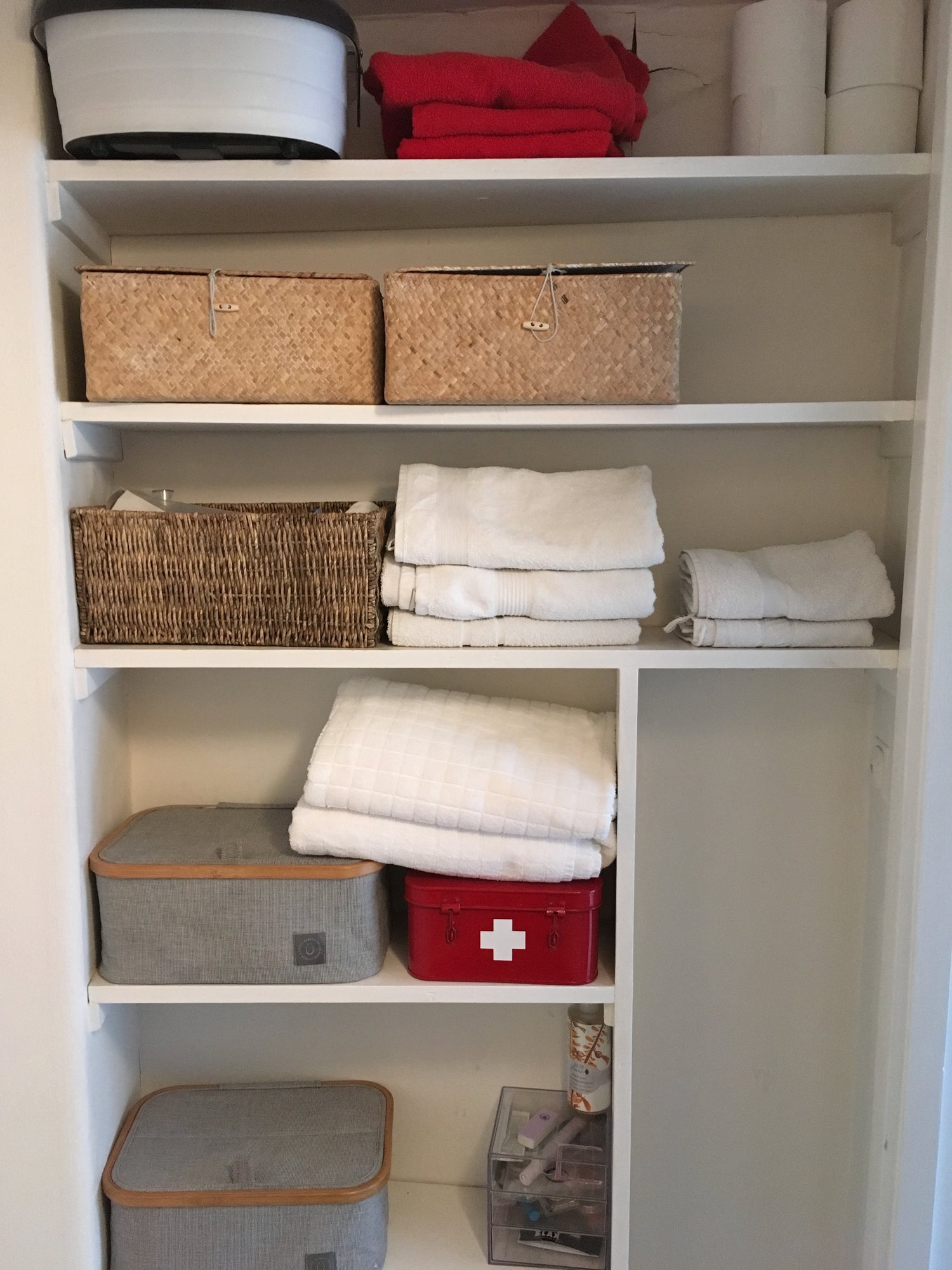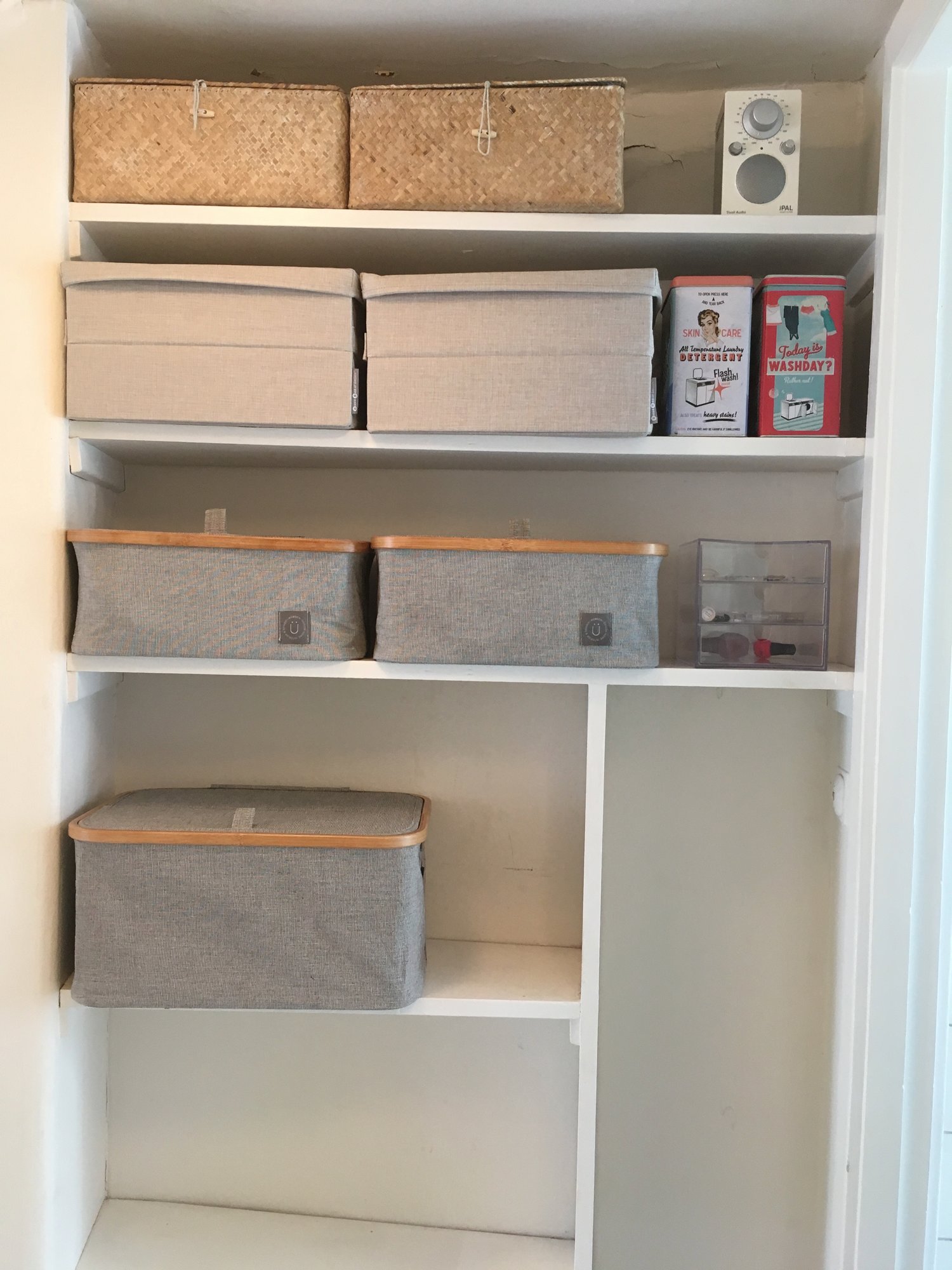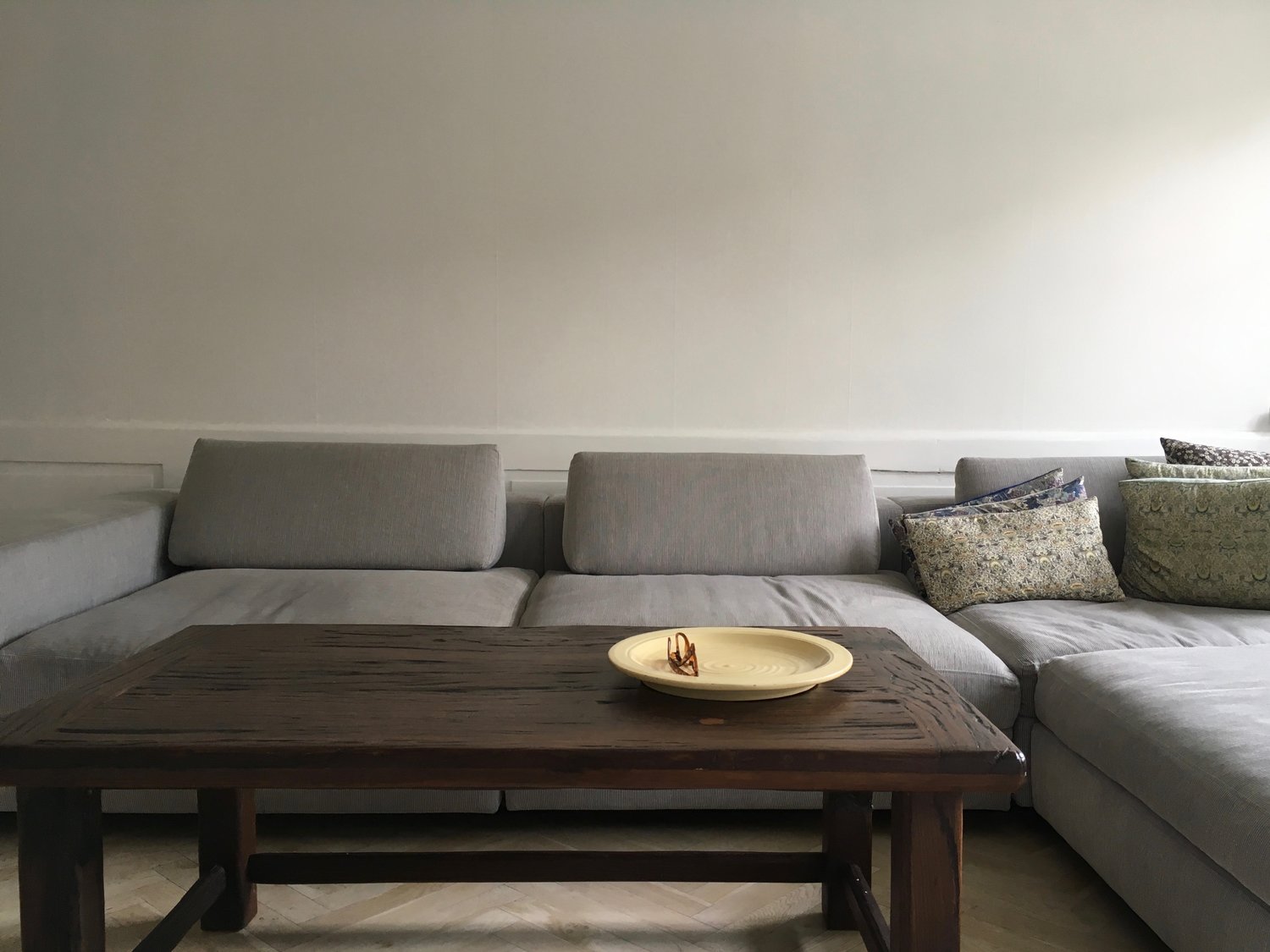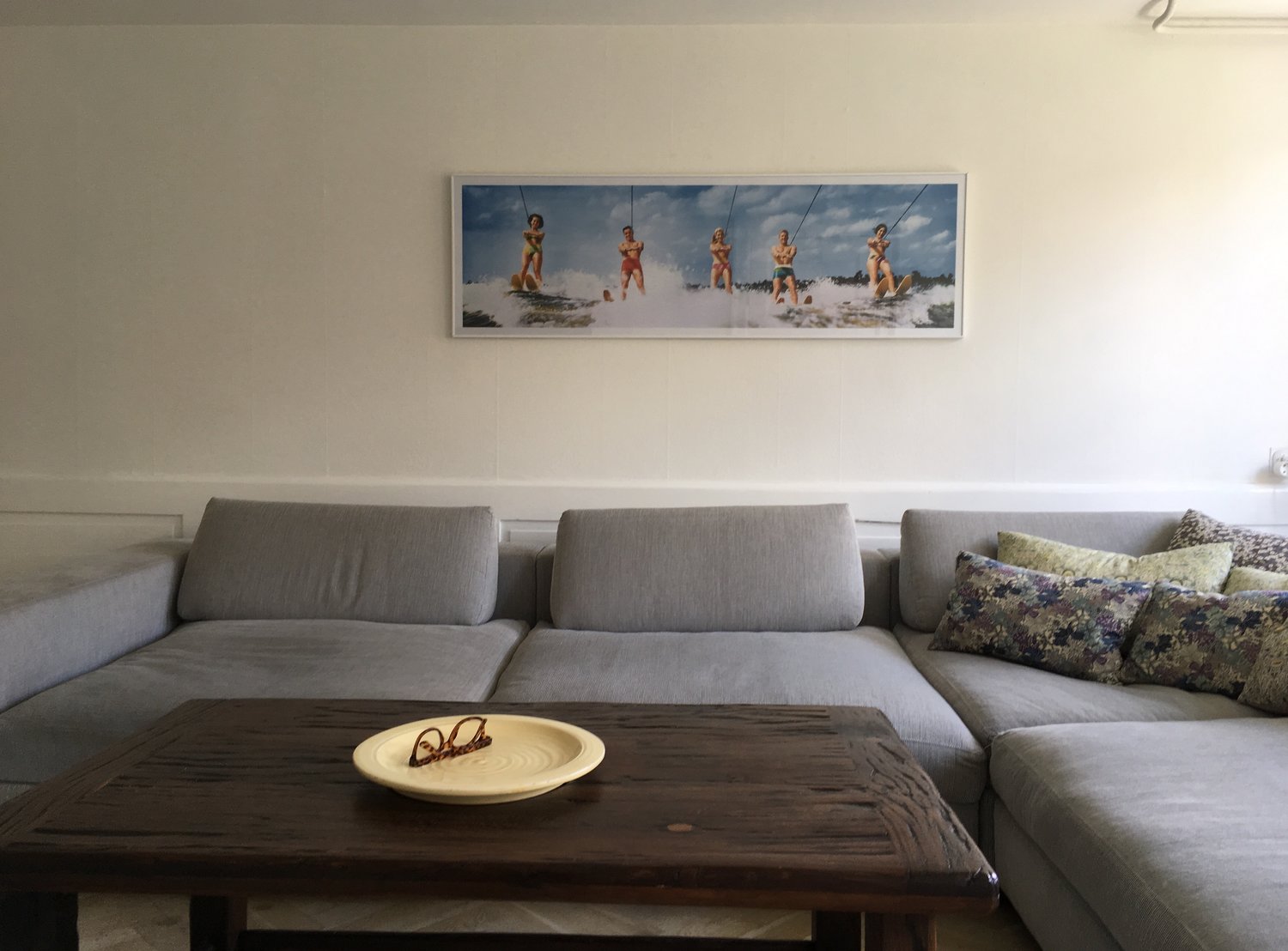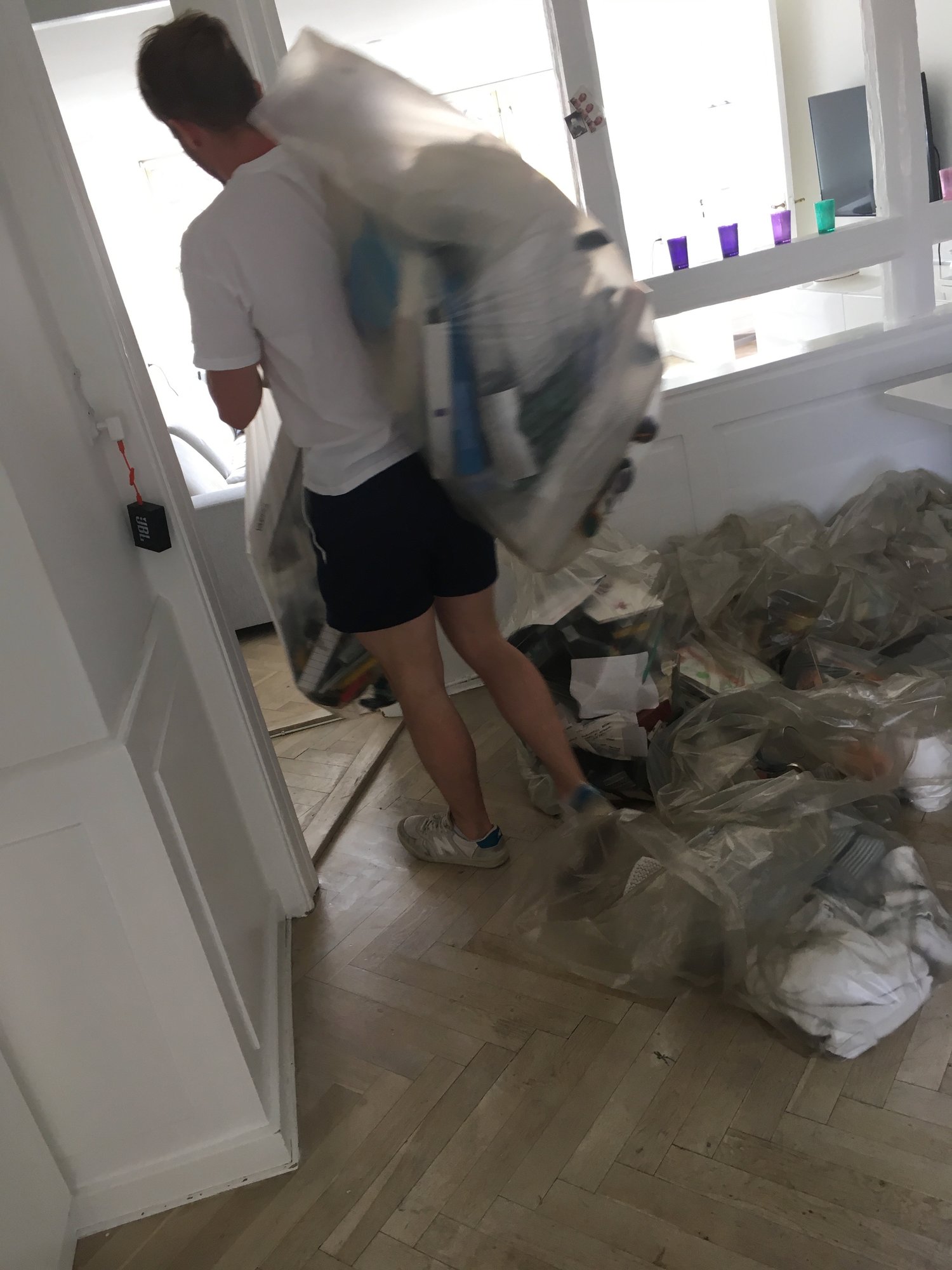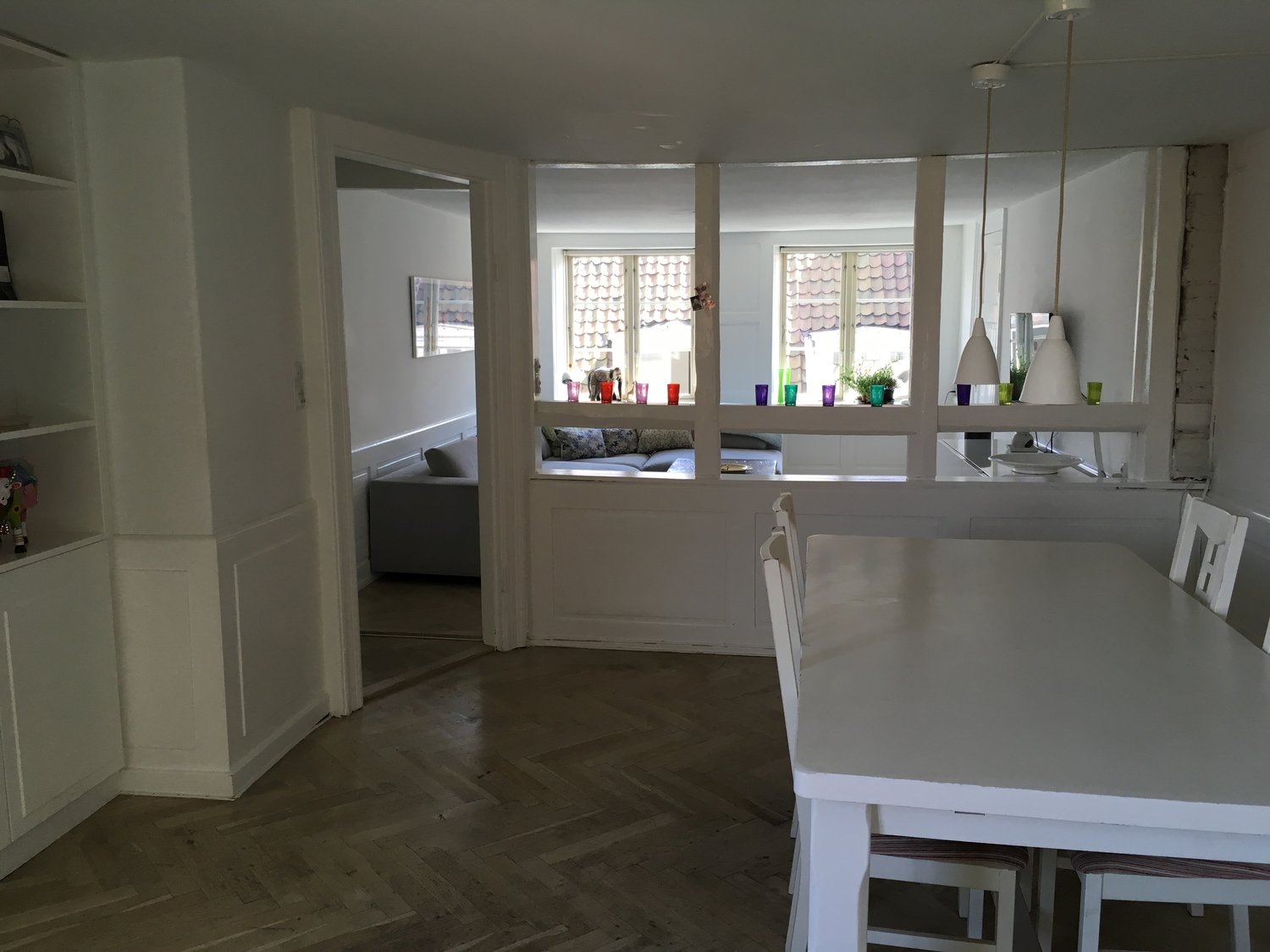The Konmari Way - How To Clean Up Your Home (And Your Life). Part 2
“My home is not a storage shed”
I’ve had my entire home and all my belongings up for review and clean-up using the Konmari method lately. This is the second and last part of my serial about tidying. I recommend you read the first part first.
This post contains affiliate links. You can read about my affiliate policy here.
Contents of this blog
How my books got a new and better life
Papers and documents – discard everything
Bits and pieces and kitchen and bathroom stuff
Sentimental Items
What happened to all the things I discarded?
Before and after photos
1. How My Books Got A New And Better Life
When all my clothes had hit the mark I threw my self over my home’s reading stuff. All books and magazines were up for a review and a scrutiny.
I’ve always found a bookshelf with books decorative and cosy, and didn’t really see my bookcase as a big eyesore. Furthermore, my bookcase is a built-in, so it's not straightforward to replace it with something else if I run out of books.
Hence the reason I was somewhat hesitant about the project to start with, even though I had lots of books that I’d never actually opened, and I also owned two copies of the book "Shantaram" - one in hardcover and one paperback, which however still hadn’t made me read it. Besides. I had books lying around all kinds of places in the apartment - in the kitchen, in cupboards, in drawers and in the bedroom, which contributed to a certain constant untidiness in my apartment.
Keen on following Marie Kondo's instructions, I started by removing every book and magazine from the shelves and from the rest of the apartment and placed them on the floor sorted by:
General (entertainment stuff)
Practical (cookbooks, travel books, textbooks, self-help etc.)
Visual (photographic collections, coffee table material)
Magazines
Marie points out that it’s important to remove the books from the rack and down on the floor for two reasons:
You can’t judge whether a book grabs you when it’s still on the shelf. When you ask: "Does this spark joy" while it is still on the shelf or in a drawer, the question will not mean much to you.
Books that have been left untouched for a long time are dormant and become "invisible". Although in plain sight they remain unseen.
For a very long time I’ve had a pile of cookbooks lying on top of each other on the top a cupboard in the kitchen - arranged by size. I’d probably reasoned at a time that was most convenient place to have your cookbooks where in the kitchen.
However, books in a kitchen become quite greasy and gross from the cooking smoke, and my new awareness had taught me that things arranged on top of each other make it more difficult to use them, and things at the bottom or in the middle of a pile are most often ignored. And as a matter of fact, I rarely used my cookbooks; I rather chose to find recipes on the Internet when I needed inspiration.
Now my cookbooks are placed on my thinned bookshelf – de-greased and visible - and funnily enough I’ve started using them again.
Sorting Books
Once all my reading material were on the floor. I took them in my hand one by one and decided whether or not it delivered a thrill of pleasure. I made the decision the moment I TOUCHED the book / magazine, which is crucial according to Kondo, because If you start reading it’ll cloud your judgment, and you start asking whether you need this book instead of relying on you first intuition.
The point is that you will end up having a bookshelf with only the books you really like and a pleasure to look at.
Later Means Never
When you’re sitting there on the floor surrounded by all these books and magazines you’ve read and haven’t read it might be tempting to keep the unread ones. And it may also be that you think you want to read your favourite book again.
Then try to count the books you've read more than once. For most people, the number is very low, unless you have a very special profession.
Books are essentially paper with printed information on. Their purpose is to be read and to convey information. It's not their purpose just to be kept on a shelf.
You read books for the experience of reading. Books you have read have already been experienced and their content is inside you, even if you don’t remember.
So when you decide what you want to keep and what you want to get rid of, forget about the argument that you may want to read it again or that you haven’t mastered anything in a given book. Instead take each book in your hand one by one and decide whether it moves you or not.
Regarding the unread and half-read books. If you've missed the chance, even if you've had the best intentions, the odds are very low that you’ll ever read them. The Internet has made it both cheap and easy to purchase books, so get rid of the unread and half-read books and keep only the books that really spark joy.
Only by discarding the books you haven’t read and the ones that don’t provide a spark of joy, you can become aware of what you’re really passionate about.
Prospectively it’s a good plan to read a particular book the moment you first encounter it.
Storing Books
I transferred the wardrobe concept to the bookshelf and arranged my books in rising to the right. This gave the bookcase a more positive expression I think.
I decorated the top left shelf as a small “altar” with my little Buddhas, amulets, and good luck charms, which had otherwise been placed randomly around the appartment. By placing them above eye level, they get a "prominent" value and become more shrine-like.
To me, my home is my sacred space where I can relax, recharge and feel comfortable in.
My home is not a storage shed.
2. Papers And Documents – Discard Everything
When the books are sorted, next in line is the home's paper load.
This category was surprisingly emotional to me. First of all I managed to fill two big garbage bags with papers, which surprised me because I didn’t know that I’d had that many papers lying around the place for absolutely no reason.
Secondly I realized that when you go through your paper stuff you encounter old bank statements, divorce papers, banknote papers, payrolls, sweet and fun post-it notes from former colleagues and friends, you'll also get flashbacks to hard times as well as good time, but you will also be reminded of how far you’ve actually come compared to before.
I was also really amazed at what a relief it was to get rid of all those old documents that apparently had weighed me both mentally and physically.
The Konmari way to get the house's papers is order is to discard all that does not fail in one of these three categories:
Currently in use.
Needed for a limited period of time.
Must be kept indefinitely.
Papers Are Defined As:
School- and other notes on the refrigerator
Unanswered invitations
Greeting cards
Manuals
Receipts
Credit card statements
Bank Statements
Paychecks
Insurance papers
Press cuttings
Newspapers
Lecture Materials
Personal papers
Warranties
And so on
Note that photos, diaries and old love letters are not part of this category - we will get to that in the last round.
Lecture Materials
Throwing out old seminar and course materials was something of an eye opener for me, and it makes a lot of sense now where it’s all out of my home, as I (like most others) rarely looked at those papers afterwards. What you learn at a seminar should be put into practice immediately, otherwise it won’t stick, and the old notes and material will only be of minor support. You can take the seminar again if necessary.
Bank Statements & Manuals
You can find most online today, so no need to have a library of that in your home.
Warranties
Discard the expired ones and keep the rest together in a single clear folder.
Birthday Cards And Other Greetings
Once you’ve read a card the purpose of it is complete, and you can part with it with gratitude for conveying to you the consideration of the sender. You can keep those greetings that give a special spark of joy.
Pay Slips
The purpose of a pay slip is to inform you how much you’ve been paid and how much you’ve paid to the tax office. Once checked, its usefulness is over, unless it’s needed to document something. In such cases, only a few of them are usually required.
Cooking Recipes
Recipes - handwritten and cutouts. Discard the ones you don’t use and place the few left inside a selected cookbook.
All The Other Paper
Also give your notice board, fridge and the bowl on the table where things with no place land in, a critical look.
Paper Storage
When you have finished sorting all your papers, you can divide them into two categories:
Papers to be saved. These are journalized according to how often they are used.
Papers to deal with.
Including:
Letters requiring a reply.
Forms that need to be submitted.
A newspaper you intend to read.
Etc.
Use a vertical organizer in which papers can be stored standing up and designating a specific place for it. All papers requiring attention can be placed in here without separating them.
The general principle is that papers and documents should be kept easily accessible and manageable.
3. Bits And Pieces And Kitchen And Bathroom Stuff
The paper and this miscellaneous part of the clean up merged a bit for me, because I came across so many little things while emptying drawers and closets for papers. But the principle here is that once you’ve sorted your papers, you throw yourself over your miscellaneous belongings in a certain order.
It may seem like an overwhelming task, but if you deal with it in systematically order and follow these steps, it's actually quite simple:
Cd's and DVD's
Skin Products
Makeup
Accessories
Valuables (passports, credit cards, jewellery, etc.)
Electrical equipment and appliances (anything that seems vaguely "electric" - radios, cameras, cords, hair dryers, shavers, etc.).
Household equipment (I got rid of a lot of plastic in this category...)
Household supplies (medicine, laundry powder, cleaning supplies, napkins, handkerchiefs etc.)
Kitchenware (cutlery, pots, blenders etc.)
Other (spare change, figurines, incense, free novelty goods, hobby thingies etc.)
Same principle here: Keep only what delivers a spark of joy. Nothing else.
Gifts
In this category you’ll probably encounter objects that you’ve received as gifts, which you just can’t get yourself to throw away even though you never use them or they don’t fit your taste. About that Marie Kondo says that the purpose of a gift is to be given. Presents are not "things", but means for conveying someone’s feelings. When viewed from this perspective you can appreciate the thought behind the present, and you don’t need to feel guilty for parting with a gift. Discard a present if it doesn’t deliver joy to you.
Cords
All the unidentified cords I came across on my way through my miscellaneous stuff went straight to the bin together with many iPhone charging cord, which I’d build up an impressive collection of.
Luckily husband wasn’t home during this step, because he’s never thrown out any wire like things. He suffers in this area from an extremely severe degree of "you-never-know-virus", so this would have triggered a lot of tug of war with unidentified cords between us.
Spare Buttons
All the spare buttons that come with new clothes ... You never use them - do I need say more?
Free Thingies
Plastic cups you’ve won, pens from a hotel stay, beer glasses with logos on, post-its with logo and the likes. They rarely deliver a spark of joy...
Small Change
Coins belong in the wallet. Most people have small change lying around in the home, in the car and in a piggy bank. “Coins are good cash and have value, but are treated with far less respect than paper money”.
After this reminder from Marie, I gathered a five-litre plastic bag with good Danish coins and one with foreign currency. The one with the foreign coins I sorted in Norwegian, English and other countries. I discarded the coins from “other countries”. The rest I know I’ll use.
I've started spending my big bag of Danish coins whenever I'm in a supermarket that has a coin machine at the exit counter. Since I’m loaded with quite a few coins I do it bit by bit. But it's so nice to get rid of that heavy load of metal instead of having them lying uselessly around the house.
4. Sentimental Items
“The space in which we live should be for the person we are now, not the person we were in the past” –Marie Kondo
Once clothes, books, and bit and pieces are under control, you're ready to deal with things with sentimental value.
Things with sentimental value are often reminders of a time when these items provided joy, and therefore the thought of disposing them can spark some fear of loosing the precious memories with them.
But there’s no need to worry, because true precious memories will never vanish even if you discard the things associated with them.
We live in the present. No matter how wonderful things used to be, we can't live in the past.
The joy and excitement we feel here and now are more important. So, therefore, the same discarding rule applies here: "Does this thing give a spark of joy?" Ask yourself that each time you pick up an item. When you relate to each and every piece in this way, you’ll process your past too.
When you stow things away in drawers, cardboard boxes, in lofts or in basements, rather than relate to them, the past will slowly fill up more and more of your life and hold you back from living in the here and now.
For example, it may be very beneficial to let go of old love letters and photos of former lovers, because hanging on to them makes it more likely that you’ll miss the opportunity for new relationships.
The purpose of a letter is fulfilled at the moment it’s received. By now, the words are long forgotten by the person who wrote it.
The same goes for other memories and presents you’ve received. Only keep the items that give a true spark of joy today.
Photos
On my route through my old gems I stumbles across photos here and there, but well behaved I put them all aside in a designated spot for the last part of my tidying process without relating to them.
According to Marie, her proposed tidying order honour ones true intuitive sense of what brings joy. If you start sorting "Kodak moments" too early in the process, it will spin the whole process out of control and bring it to a halt.
Thus prepared and educated I threw myself enthusiastic over the last category - my photo stock. But easier said than done I realised. Because if you, like me, have lost your fair share of dear family members, been through a few divorces, and on some amazing trips around the world, you will come across photos here and there that despite the fact that they spark no joy at all, you can’t get your thumbs and index finger to loosen their grip on them.
But when I finally did let go, it was such a thrill afterwards to sit back with only the few representative quality images of great experiences and dear ones.
... And I realized how boring images of most scenery actually are.
Really important things are not that great in numbers.
The photo-sorting category made me reflect on the history of photography. Photography is only a few hundred years old and that the number of pictures from the 19th century and the beginning of the 20th century are quite few in comparison. But the few pictures you see from then are tremendously narrative of that time, that moment and the atmosphere.
Today we’ve developed a need to constantly document everything with images. This way images have become overwhelming in quantity and lost lots of their value.
How To Sort Photos
Keep in mind that sorting photos is a bit more time-consuming than the other categories.
With this method you’ll keep only about five images per day of a special trip, but these will be so representative of that time that they will bring back the rest vividly.
Use These Four Steps
Remove all photos from their albums.
Look at each one - one by one.
Keep only those that inspire joy. The meaning of a photo lies in the excitement and joy you feel when you touch it.
Put the joy providing pictures back in album. Images are much more enjoyable when they are in albums than when they are in a box.
5. What Happened To All The Things I Discarded?
Along the way I sorted all my waste in metal, electric, small combustibles, fabrics, glass, etc.
My daughter in law put several of my items and books up for sale online and made a quite a few good Danish Kroner on that. My more private documents and letters I burned in the fireplace in my summerhouse, the rest of my stuff went to the local recycling station.
6. Before And After Pictures
